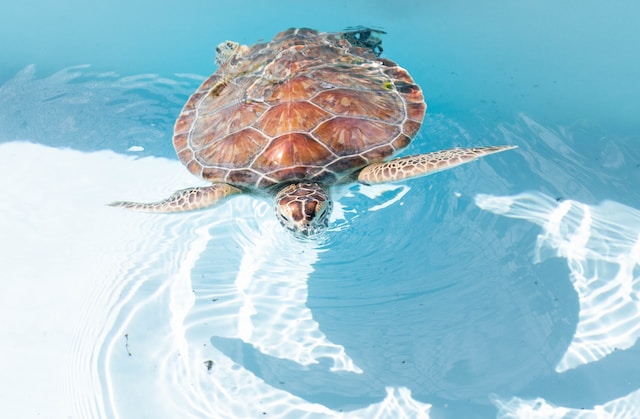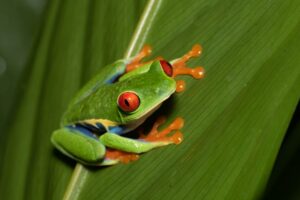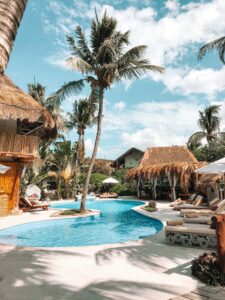Hopkins Belize can be an amazing experience all year-round. Seeing sea turtles nesting on the beaches is one of the most unforgettable experiences you’ll have when visiting this tropical island paradise.
Fortunately, if you’re lucky enough to find yourself in Hopkins during the wet season, there’s a chance that you will be able to see sea turtles in their natural habitat. Aside from the fact that this is a very special sight to witness, it’s also extremely important that you don’t interfere with these beautiful creatures.
Wet Season in Hopkins Belize
If you are fortunate enough to see one of Belize’s sea turtles during your vacation here, you will certainly take away a lifetime memory. Witnessing one scurry across the beach toward the ocean can be truly magical; even more so when seeing a majestic marine creature dig a hole with her flippers before using its teardrop-shaped cavity for 80-120 leathery eggs is so rewarding – knowing you helped contribute by being present during the nesting season on an official protected beach.
Unfortunately, however, such precious moments are becoming less frequent as sea turtles face ongoing destruction of their habitat due to human developments like piers, resorts, residences on beaches, the use of shrimp trawls and long lines, harvesting eggs for sale in coastal communities as food or sale continues to pose threats; nesting season usually runs from May until November on beaches in Belize where both loggerhead and green sea turtles have been identified.
Belizeans know that the wet season offers the ideal opportunity to discover their country’s lush tropical rainforest and learn about the wide array of animals found there, such as howler monkeys, jaguars, tapirs and an assortment of bird species.
The wet season typically spans from June until mid-November and features increased rainfall that typically takes the form of short rain showers rather than deluges. There is, however, an August period known as “Mauger season,” in which heavy summer rainfall gives way to mini drought conditions.
February is an ideal month, as temperatures begin to stabilize and water sports become possible again. March and April bring a warm tropical climate with minimal rainfall – ideal conditions for snorkeling and diving around Belize’s barrier reef and celebrating Holy Week and Easter festivities in Belize. Prices tend to increase during this time; booking accommodation, transportation and tours early is highly advised.
Dry Season in Hopkins Belize
December to May is Belize’s dry season, when conditions are ideal for exploring Mayan ruins, vine-draped rainforests and sunbathing on pristine beaches. Additionally, December through May marks peak tourism season; early booking is recommended for accommodations and tours during this timeframe.
Even during the dry season, there’s plenty of wildlife to discover all year long. The rainforest becomes particularly lush and vibrant during these months – perfect for seeing monkeys, jaguars (if lucky), iguanas and tapirs among other animals like monkeys and wildcats like jaguars; birding enthusiasts also won’t miss seeing colorful scarlet macaws or blue morpho butterflies around!
June and July see an abundance of blooming flora, providing abundant food sources for wildlife and bird species alike. As such, nighttime jungle safaris or guided hikes at Cockscomb Basin Wildlife Sanctuary present an excellent opportunity to spot different types of wildlife and bird species.
Once the rains recede in August, loggerhead sea turtles return to beaches to lay their eggs. Unlike their Hawksbill relatives, however, loggerhead turtles create nests on land rather than water due to the unique design of their shells and lay their eggs there before covering them in sand in order to provide air for survival.
September is an excellent month to spot manatees along the southeastern coast and mangrove lagoons in Placencia, while whale shark season sees these gentle giants gather off-coast for an annual feast.
In October, the rainforest and jungle come alive again as flowers and fruit blossom and draw birds and other wildlife into its fold. Rains tend to be less frequent and shorter during this season compared to during wet season rainstorms; however, extreme rainfall could hinder certain tours such as cave exploration where rivers could flood during expeditions.
November is an excellent month to visit Belize, with smaller crowds for Garifuna Settlement Day on November 19. Temperatures remain comfortably warm yet not humid or oppressively so.
Whale Shark Season
Belize beaches become an unforgettable snorkeling or diving experience each spring when whale sharks make an annual migration into our waters, spending approximately four months here each year. When they do arrive, they tend to visit Gladden Spit and Silk Cayes Marine Reserve about 30 miles east of Placencia where they tend to congregate for up close views of these incredible marine giants.
Attracted by a massive fish aggregation spawning event, whale sharks emerge to witness this spectacular sight and rise up from below the waves as if to marvel. Though whale sharks reach over 60 feet long in length, they remain completely harmless and even docile – providing swimmers with a once-in-a-lifetime opportunity that is well worth waiting for.
March, April, May and June are ideal months for whale shark diving in Belize as this is when they’re most likely to appear, particularly around a full moon. But sightings are possible year-round depending on lunar cycles and time of day.
Birders will be mesmerized by the abundance of wading birds that gather in lowland lagoons, such as herons, ibis, storks and snail kites. Additionally, this season is excellent for seeing hummingbirds, tanagers, warblers and terns.
August and September, commonly referred to locally as the “little dry” season, are a respite from tropical rainfall with milder temperatures, less rainy days, calm seas for kayaking, snorkeling and catamaran charter cruises, plus great chances of seeing sharks, rays and dolphins! This period offers kayakers and snorkelers ample opportunities for outdoor adventure.
From November through April, water temperatures drop but are still warm enough for most divers to use a shorty wetsuit. This is an ideal time to visit since prices for accommodations and tours tend to be more reasonable during this period. However, it is also rainy season which means it could potentially bring hurricanes. It is also sea turtle nesting season with both Hawksbill and Loggerhead species laying their eggs along Ambergris Caye beaches and beyond.
Bird Season
Belize boasts a diverse natural heritage that spans wild animals, rainforests and coral reefs. Home to the second-largest barrier reef on earth and nesting ground for sea turtles–primarily loggerhead and green turtles–Belize offers visitors an unforgettable experience when seeing endangered creatures like these in their natural environment – planning your visit during peak sea turtle season is highly recommended!
From March through May, Belize’s southeastern coast becomes an oasis for whale sharks. These massive but peaceful marine life can be seen snorkeling or diving off Ambergris Caye and other island destinations; their movements are determined by lunar cycles; for optimal viewing two days prior to and ten days post full moon are the optimal times.
July through September are typically the wettest months in Belize, though most rainfall consists of short showers that do not interfere with marine visibility on Caribbean reef sites.
October and November remain warm and tropical, yet receive less rain than other areas. These months are an excellent opportunity to see colorful birdlife like scarlet macaws and blue-morpho butterflies as well as wildlife such as monkeys, tapirs and iguanas scurrying around; jaguars may even make an appearance!
December begins wet but quickly turns dry as the dry season kicks in, offering cooler temperatures and improved water clarity ideal for diving and snorkeling. December also marks Fiesta de Carnaval in Belize City featuring exotic costumes, street music, dancing and street festival fun; be aware that travel booking should be booked well ahead of time as this month can become particularly busy due to school Christmas breaks! It is an especially good month to visit Belize as families look ahead to the Christmas holidays.




